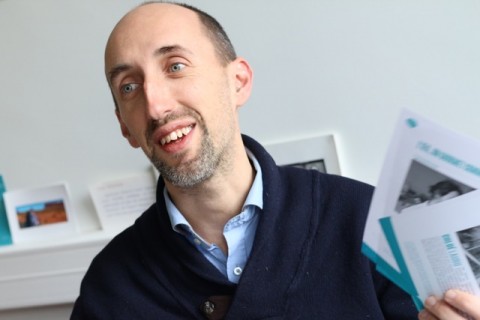
The next edition of “Science & You”, international science culture event organised by the University of Lorraine, is set to take place from 16th to 19th November 2021. An encounter with Lionel Maillot, researcher at the University of Bourgogne, member of the Conference’s Scientific Committee and the national survey’s Steering Committee.
What does the international Conference on science culture Science & You represent to you?
Lionel Maillot: “For me, it’s a forum and crucial opportunity for connection between researchers who study communication and practitioners of scientific communication.
Whether we’re practitioners, mediators or journalists, we spend time discussing our practices: how do you communicate better with the public? What are the best tools to use? What problems are there? And so on. We organise webinars, colloquia and study days and exchange on social networks, but that isn’t always enough…
At one point in my career as a mediator, I turned my focus to the world of research and explored work to do with researchers’ involvement in scientific communication. It showed me how important it was to base my thoughts as a mediator on research. Objective work, by sociologists, researchers on information and communication sciences, and psychologists, can shed light on the problems of scientific communication as well as re-examine various assumptions that underlie our practices as mediators and in scientists’ communication.
Science and You is an excellent opportunity to take a fresh look at ourselves (whence our proposal of the “take a step back…” theme) by attending a range of presentations by researchers and practitioners from across the world, and engaging in dialogue with them. The effect is also of fundamental importance for the “SciComm” community of researchers. They connect their work to practices and reflections that may also “shift” their ways of thinking about scientific communication.”
What is at stake today as regards dialogue between science and society?
Lionel Maillot: “First of all, it’s impossible to answer that question in a few words. It would require reference to a great many studies and viewpoints!
There have always been numerous issues at stake in science-society dialogue, and the questions currently emerging in the media and social networks (Covid, vaccines and the climate) must not make us forget the perennial and no less political issues connected with such dialogue. Emancipation and social ties, for example, are fundamental aspects of scientific culture. These issues act as driving forces, stimulating frequent contacts between specialists and generalists. Working on these aspects enables consolidation of a context of mutual understanding. It seems to me to be risky simply to focus our attention on dialogue in the single context of subjects of current immediate interest to society. As for the present situation, so as to make the connection with your previous question, we can once again learn from scientific work on public communication on science. Since the 1980s, in the English-speaking world and France alike, changes of paradigm as regards scientific communication have been proposed in order to take in the social aspects of research rather than simply centre communication on the issues involved in scientific literacy. We speak of “Public Understanding of Research”, and of “Science en train de se faire” (Science in the making) in France. The idea of communicating on the uncertain is a central concern. As Bruno Latour wrote, let’s show “hot” research” in comparison with “cold” science. But the determination to educate, to communicate on scientific results (or on a method that has become “cold”), implicitly promoted by a good number of communicating scientists, is regularly underscored by dozens of studies. In the public space, it results in reluctance to tackle questions of uncertainties connected with social aspects of research. It’s clear that developing knowhow on communication of such uncertainty, incorporating open positions (I’ll come back to that), is necessary when it comes to broaching subjects like vaccination.”
How do you communicate in layman’s terms during a health crisis in which everything is dematerialised?
Lionel Maillot: “In the public space, it seems to be risky to communicate in such a way that only one of the protagonists would be impacted. Where only the “receiver” would be affected by a message transmitted by an imperturbable transmitter. In order to remedy this, one thinks in terms of dialogue models and participatory science. But be careful – such notions don’t do it all. I’d prefer to speak in terms of the listening skills required or, further upstream, of understanding the “interest of listening”. My thesis work on how communication in layman’s terms affects young researchers has led me to get them to discover and feel the interest of opening up to others via relational communication. You can then set about couching what you have to communicate in easily accessible terms, possibly in line with a top-down model, but keeping in mind the desire to be porous to knowledge and have your presence felt by the other party. This position, if made possible by the communication situation, cannot but have an effect on the audience, which will also open itself up. We’ve had the opportunity to observe a number of experiments along these lines during digital popularisation encounters this year*. The effects of dematerialisation are nonetheless extremely concerning, as it is during certain human encounters, up close, face to face, that conciliatory, motivating porosities between people who talk about science and society have mainly been observed.”
*I hope that, in November, during Science & You, we shall have the perspective and presentation of observations necessary to assessment of these experiments in digital communication.
The call for papers is extended until February 19th.
See full information here
